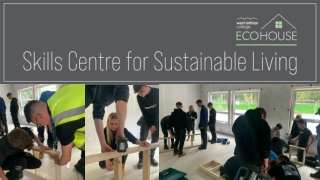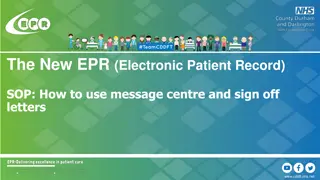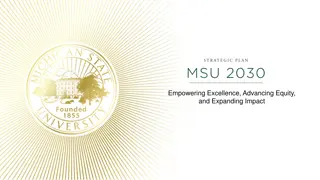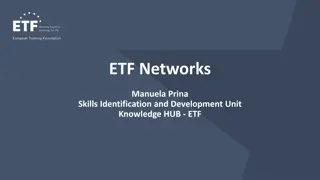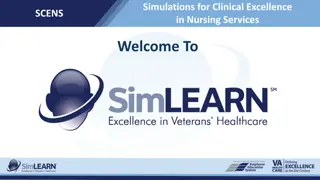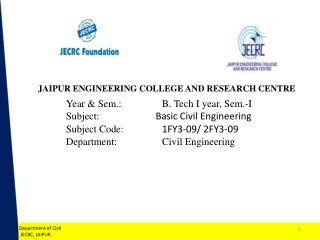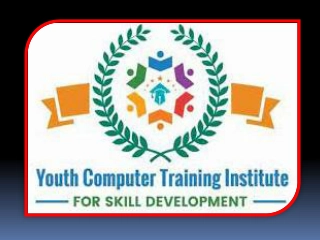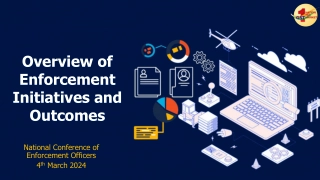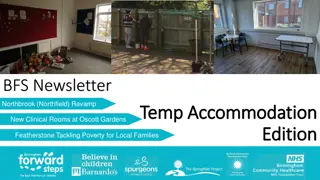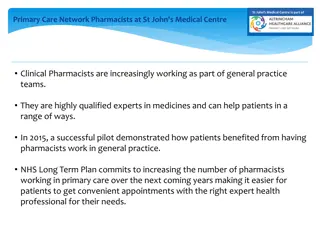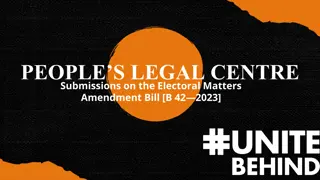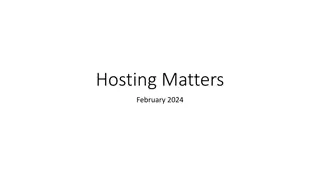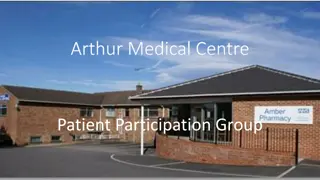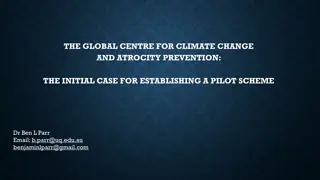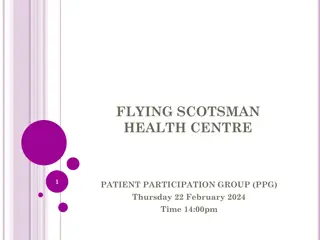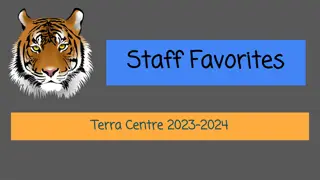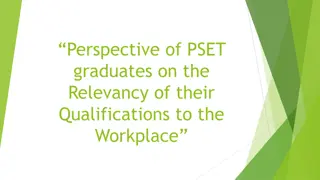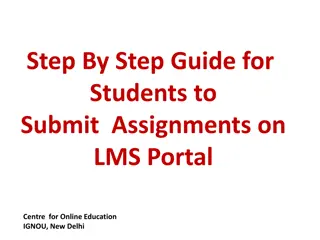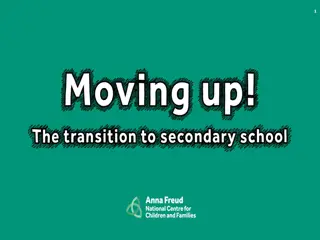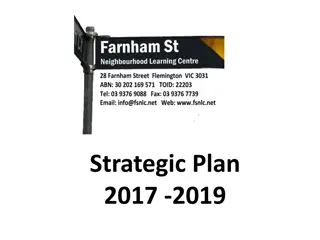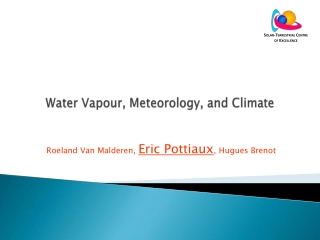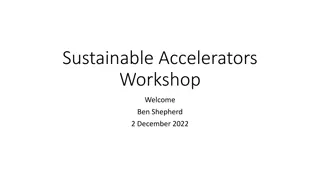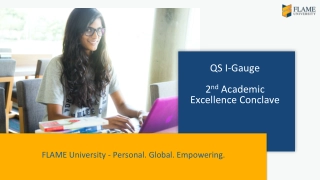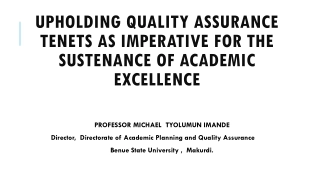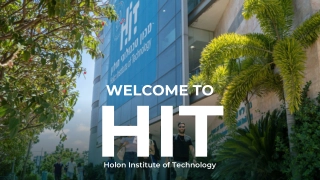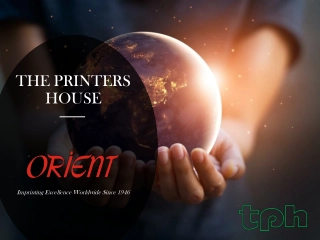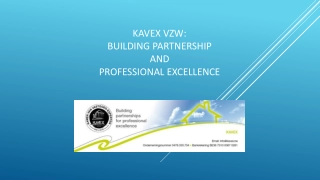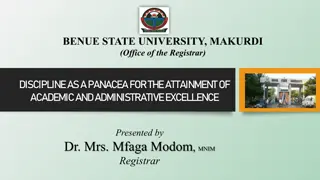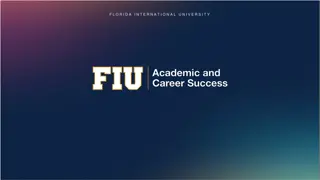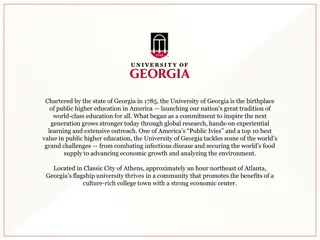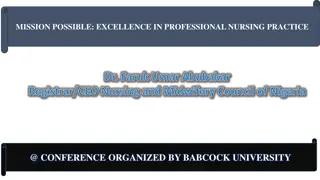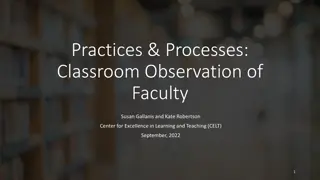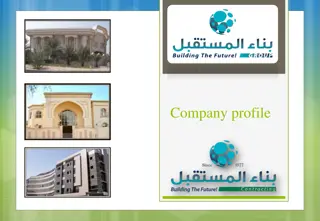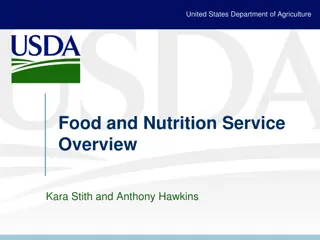Podopaediatrics Centre of Excellence - B.Kara
Meet Mr. Ivan Farrugia, a Glasgow Podiatrist with a focus on podopaediatrics. Learn about his career overview, clinic services, team, and the definition of podopaediatric practice. Receive expert care for various foot conditions.
Download Presentation

Please find below an Image/Link to download the presentation.
The content on the website is provided AS IS for your information and personal use only. It may not be sold, licensed, or shared on other websites without obtaining consent from the author. Download presentation by click this link. If you encounter any issues during the download, it is possible that the publisher has removed the file from their server.
E N D
Presentation Transcript
Podopaediatrics Centre of Excellence B kara Health Centre Mr. Ivan Farrugia DPod SR Pod MPodAMSc Glasgow Podiatrist
Career overview 1998 - Graduated UOM Diploma in Podiatry 2006 President APM 2 years 2006 Clinical Educator 2008 - PGCert Podopaediatrics (GCU UK) 2012 MSc Podiatry (Podopaediatrics) GCU UK 2012 Opening Podopaediatrics B Kara COE 2013 Lecturer UOM - Podopaediatrics Module 2018 President APM till today 2020 Vice President FIP 2 years 2021 Executive Allied Health Care Practitioner 2022 President FIP 2 years
Podopaediatric clinic Service was introduced in February 2012 Aims: To educate and to deal with conditions according to evidence based literature To reassure parents/guardians on several foot and ankle conditions that could be part of the normal child growth development To work hand in hand with other Health care professions in the Paediatric arena
The Podopaediatric team Mr. Ivan Farrugia Ms. Roxanne Agius
Definition of Podopaediatric practise Podopaediatrics management of paediatric foot disorders and their associated effects upon the lower limb and the child in general encapsulates the diagnosis and Involves assessment of the lower limb and associated axial skeleton in health and disease and the evaluation and treatment of conditions that may be isolated to the foot, or manifestations of systemic disease
.continued This involves a specialist approach to the care of the child separate from that involving assessment and care of the adult. Care transverses all medical and surgical specialities and takes cognisance development, age and the psychosocial needs of the child and parent of the vagaries of child
Foot conditions and treatments An array of foot conditions: Ingrown nails Heel pain Biomechanical foot conditions In toeing gait Referrals from Scoliosis clinic due to LLD Overriding and overlapping toes A plethora of dermatological conditions mostly verrucae and Tinea (hygiene, communal showers) Onychomycosis Nail surgery Cryotherapy using Cryopen. This is done when topical treatment fails
Excessive Pronation When standing, pronation occurs as the foot rolls inwards and the arch of the foot flattens, hence the term often used to describe someone who over pronates as having 'flat feet Pronation is a normal part of the gait cycle which helps to provide shock absorption at the foot Excessive foot pronation (flat feet) with concomitant knee internal rotation and adduction can lead to a chain reaction of muscle imbalances throughout the kinetic chain, leading to foot and ankle, knee, hip and low back pain
Excessive Pronation Can lead to internal rotation stresses at the lower extremity and pelvis, which may lead to increased strain on soft tissues (Achilles tendon, plantar fascia, patella tendon, IT-band) and compressive forces on the joints (subtalar joint, tibiofemoral joint, iliofemoral joint, and sacroiliac joint), which can become symptomatic Thus it is of utmost importance to identify and classify excessive pronation and treat accordingly patellofemoral joint,
Foot Scan Analysis A Foot scan is a form of advanced technology in measuring pressure and force distribution accurately, at high speed and high resolution The data collected is very sensitive to change. It provides a clear clinical picture and objective measure of an individual s static, standing balance, through measurement of the level of postural sway, weight distribution through the feet, and location of the centre of gravity.
Leg Length Discrepancy Leg length discrepancy (LLD) causes pelvic obliquity in the frontal plane and lumbar scoliosis with convexity towards the shorter extremity Leg length discrepancy is observed in 3-15% of the population Unequalised lower limb length discrepancy leads to posture deformation, gait asymmetry, low back pain and discopathy Limb length discrepancy is usually not large (about 1 cm) and is observed in about 3-15% of the population The reasons for the occurrence of such a difference are not known in 95% of cases
Treatment options for LLD depending on the discrepancy level (acc. to Dahl, 1996 modified) Internal lift external lift Shortening of longer limb: epiphysiodesis osteotomy Lengthening of shorter limb Combined lengthening of shorter and shortening of longer limb Prosthesis
Hypermobility Hypermobility or generalised joint laxity is defined as a condition in which most of an individual s synovial joints have a range of motion beyond normal limits The prevalence of hypermobility in schoolchildren has been estimated to be 13 26.5%, with a higher prevalence in girls than boys Benign joint hypermobility syndrome is traditionally thought of as being a benign condition consisting of generalised joint laxity with non-specific musculoskeletal complaints. In some sports, hypermobile joints may be associated with a performance advantage for example, spin bowlers in cricket, gymnasts, and ballerinas However, previous studies have revealed an increased incidence of musculoskeletal complaints such as arthralgia, joint subluxations, joint dislocations, and sprains in sportsmen with hypermobile joints
Severs disease Sever s disease is an inflammation of the calcaneal apophysis The calcaneal apophysis is a cartilaginous growth center onto which the Achilles tendon inserts The generally accepted clinical picture of Sever s disease is that of an active male child 10 to 12 and female 8 to 10 years old, often presenting at the beginning of a sport season, experiencing a growth spurt, and experiencing pain over the apophyseal area of one or both heels
Juvenile Hallux Abducto Valgus Hallux valgus is a common foot problem which, in its early stages, will affect just the first metatarsophalangeal joint It is likely that hallux valgus is not a yes or no phenomenon but rather represents a continuum of variable severity It can also be associated with abnormal foot mechanics, such us a contracted Achilles tendon or a severe pes planus Juvenile hallux valgus deformities have been characterized by their familial tendency and in the past, different authors proposed that this trait was autosomal dominant with incomplete penetrance, or with maternal transmission
Dermatological Assessment Myriad dermatoses can affect athletes One of the most common cutaneous manifestations of athletic activity are skin infections Bacteria, viruses, and fungi cause these infections Many are contagious and may have serious ramifications for team practices and competitions Knowledge of these infections facilitates implementation of rapid treatment and preventive measures to ensure the least disruption in daily team activities
Eczema The prevalence of eczema has increased to levels of public health relevance in the Western world, especially in children As the most frequent inflammatory condition in childhood, eczema affects psychological wellbeing of affected children and results in substantial costs The most common type of eczema is atopic dermatitis physiological and
Tinea Pedis Fungal infections predominate in the total number of sports- related skin infections Dermatophytes may infect the foot (tinea pedis) and nails (onychomycosis) Occasionally, athletes contemporaneously suffer from several types of infection with dermatophytes Tinea pedis (athlete's foot) represents the most common cutaneous fungal infection in athletes Myriad epidemiologic studies document the greater prevalence of tinea pedis among athletes compared with non-athletes
Onychomycosis Onychomycosis is commonly seen in conjunction with tinea pedis or may occur secondary to trauma to the nail Although the exact incidence of onychomycosis is unknown, studies suggest that between 2% and 26% of the general population world-wide are affected Infections appear to be least common in children, but when they occur in these younger subjects they are frequently misdiagnosed
Verrucae Verruca can occur on any skin surface and can be transmitted by direct contact, but shared showers and locker room floors may also act as reservoirs They can range in size from a pin prick right up to covering large areas of the foot Sometimes they appear as a single area and sometimes multiple verruca can form over a large area. Initial and quick diagnosis is beneficial so treatment can start early
Hyperhidrosis Hyperhidrosis is a disorder of excessive sweating beyond what is physiologically thermoregulation Hyperhidrosis occurs in both children and adults, with the average age hyperhidrosis being 14 25 year This disorder can be detrimental to a patient s social, professional, psychological, and physical well-being necessary for of onset of primary
Callosities and corns Inappropriate shoes, abnormal foot mechanics, and high levels of activity produce pressure and friction that lead to corns and calluses Most lesions can be managed conservatively by proper footwear, orthoses, and, if necessary, regular paring The lesions usually disappear mechanical forces are removed Surgery is rarely indicated and should be specifically aimed at correcting the abnormal mechanical stresses when the causative
Ingrown Nails Ingrown toenails are one of the most frequent nail disorders of young persons and may negatively influence daily activities, cause discomfort and pain Today, conservative and available, which, when carried out with expertise, are able to cure the disease Packing, taping, gutter treatment, and nail braces are options for relatively mild cases whereas surgery is exclusively done by Podiatrists surgical methods are
Podopaediatric Clinic today 2012 till date more than 50K app (does not include orthotic treatment) We are in collaboration with: Rheumatology MDH National Sports School OPU KGH Paediatric Physiotherapy MDH Well baby clinic PHC Schools medical team PHC
Podopaediatric Clinic Primary Health Care FB Page In the early days of the Covid 19, all special clinics where closed. We still had the responsibility to keep offering the service the best way we could With the continuous help and innovative ideas from Ms Rosanne Camilleri, CEO PHC, we initiated an online clinic/contact centre on the PHC FB Page Parents/guardians who wish to ask/query/book or discuss any Podopaediatric matter had and still have the facility to do so by sending a private message on PHC FB Page, ask for Podopaediatric clinic and Mr Ivan Farrugia will handle all requests.
Podopaediatric Clinic Primary Health Care FB Page ONLINE CONSULTATIONS FROM 24/04/2020 TILL 27/01/2020 747 online consultations 30% were given online advice and treatment 70% were given an appointment at our clinics ONLINE CONSULTATIONS FROM 24/04/2020 TILL date 1200 online queries/consultations
Appointments No referral needed but it helps to keep correspondence with the HCP if requested B'kara Centre of Excellence/OPU ST Lukes Hospital Urgent and information queries can be done on the PHC FB page by sending a private message(Ask for Mr Ivan Farrugia) No Saturday appointments Once weekly afternoon session (Wednesdays) Call centre 21231231



